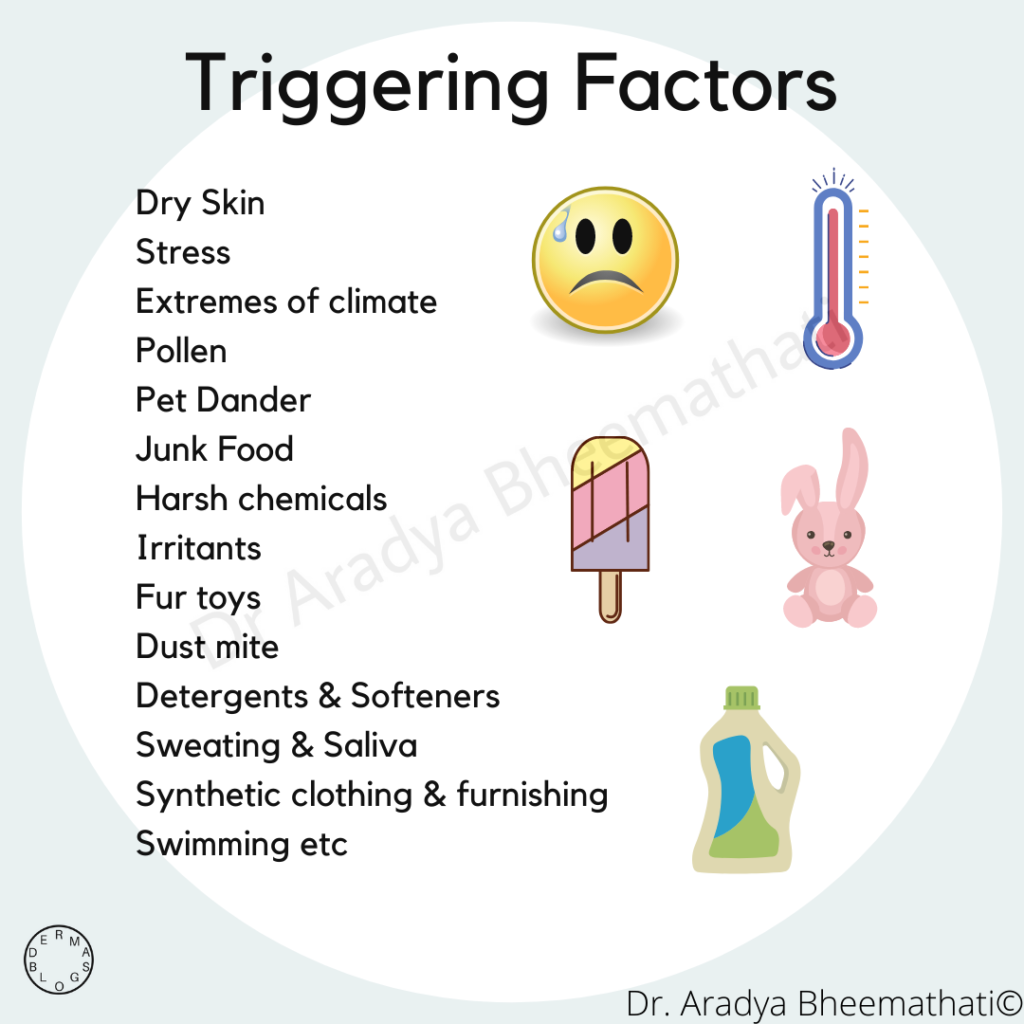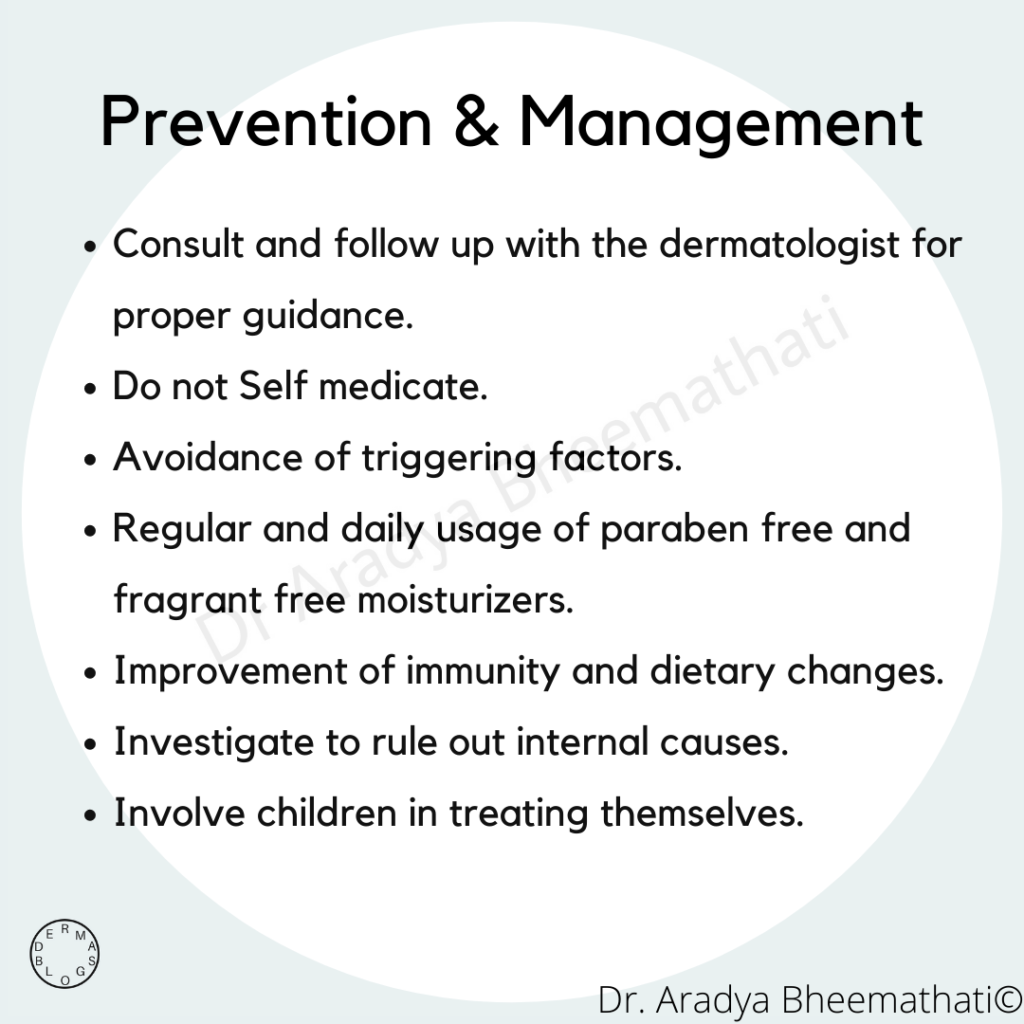Atopic dermatitis or atopic eczema is the most common eczema. Around the world, 10-20% of children and 3-4% of adults suffer from Atopic dermatitis. AD is much more common today than it was 30 years ago.
It is a chronic skin condition characterised by,
- Very severe itch
- Red inflamed skin
- Recurrence and remissions
Atopic dermatitis usually occurs in infancy and childhood. It can also occur in adult life.
Atopic dermatitis can be associated with allergy and asthma. This is called as Atopic Triad.
That’s why it is important to get it treated as soon as possible to avoid long term complications.
triggering factors
Many internal and external factors are responsible for relapses and recurrences of the disease. They include:
- Genetics
- Auto Immunity
- Dry Skin: when skin is dull, dehydrated and damaged, it acts as a portal for allergens and microbes leading to inflammation and infection.
- Sweating & Saliva: They can incite itching.
- Stress
- Extremes of Climate
- Junk food especially chocolates, jams, ketchups and any coloured food items.
- Harsh chemicals and irritants.
- Dust mites
- Pet Dander
- Pollen
- Detergents & Softeners
- Synthetic clothing & Furnishing
- Swimming (occasionally)

Atopic dermatitis can recur if one is exposed to the trigger factors or the skin remains excessively dry.
symptoms & signs
- Itching: Itching is the most prominent symptom. It can be so severe that it impairs quality of life. Constant scratching can further damage skin and lead to recurrences.
- Dry Skin: In Atopic dermatitis, skin doesn’t have the ability to hold water properly leading to dull, dry, dehydrated and damaged skin.
- Skin Rash: most commonly affected areas are skin folds and exposed areas. In adults, it may be associated with thickening and pigmentation.
- Secondary Infections: As the skin’s barrier effect is defective, secondary infections are common. They have to be treated early to prevent scarring and systemic spread.
- Thickening & Pigmentation: In chronic cases, because of constant scratching, thickening and pigmentation occur.

Prevention & management
Usually Atopic Dermatitis subsides in many children as they grow older. But as recurrences and relapses are quite common, it is important to get it treated early and promptly to avoid complications.
Few steps include :
- Consult Dermatologist as early as possible and follow up regularly for proper guidance.
- Avoidance of triggering factors.
- Do not self medicate as different protocols are required according to the activity of the disease.
- MOISTURISE, MOISTURISE, MOISTURISE – This is the main step many ignore and forget. Regular and daily usage of moisturisers is the vital step in controlling the disease. Always hydrate the skin with non paraben and non fragrant moisturisers.
- Educate the child about the condition and encourage them to be proactive in their treatment.
- Investigate to rule out internal causes.
- Food rich in omega fatty acids are advisable ( avoid if allergic ).
- Improvement of immunity by dietary changes and physical activities.
- Avoid long and hot baths.
- Avoid home remedies and other alternative medications without Dermatologist’s approval.

The key to successful Atopic Dermatitis management is lifestyle modification and taking appropriate care of one’s skin.




